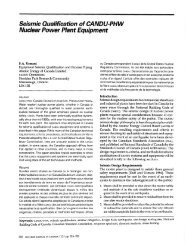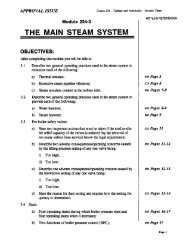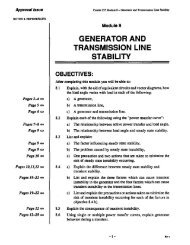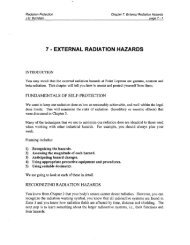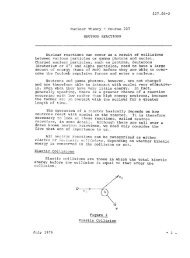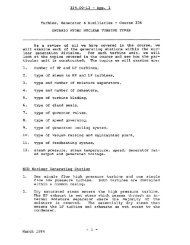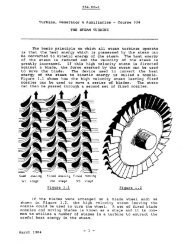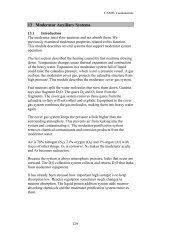Reactor Control Systems of Qinshan Phase III CANDU ... - canteach
Reactor Control Systems of Qinshan Phase III CANDU ... - canteach
Reactor Control Systems of Qinshan Phase III CANDU ... - canteach
Create successful ePaper yourself
Turn your PDF publications into a flip-book with our unique Google optimized e-Paper software.
power reduction may be fast (setback), or slow (setback), depending on the possible<br />
consequences <strong>of</strong> the variable lying outside its normal operating range.<br />
The signal processing logic associated with RRS, implemented in the duplicated control<br />
computers (DCC-X and -Y), are redundant and fail-safe in the s<strong>of</strong>tware and hardware.<br />
<strong>Reactor</strong> Power <strong>Control</strong> Calibration<br />
The reactor regulating system uses estimates <strong>of</strong> ion chambers and platinum-clad Inconel<br />
flux detectors to generate fast, approximate zone and bulk reactor powers. These<br />
estimates generate short-term power error signal to drive the zone controllers and stabilize<br />
the flux in the core. Over a longer time span, these signals are slowly calibrated to agree<br />
with more accurate estimates <strong>of</strong> reactor and zone powers calculated from thermal<br />
measurements and flux mapping respectively.<br />
a) Bulk Power Calibration<br />
The fast, approximate estimate <strong>of</strong> reactor power is obtained by either taking the median<br />
ion chamber signal (at powers below 5% FP), or the average <strong>of</strong> 28 in-core platinum-clad<br />
Inconel detectors (above 15% FP), or a mixture <strong>of</strong> both (5 to 15% FP). These signals are<br />
filtered and calibrated by comparison with estimates <strong>of</strong> reactor power based on thermal<br />
power measurements from one <strong>of</strong> the following two sources.<br />
- Twelve pairs <strong>of</strong> resistance temperature detectors (RTDs) in total are located on the<br />
reactor inlet and outlet headers. The average temperature rise generates an accurate<br />
estimate <strong>of</strong> reactor power, which is used to calibrate the platinum flux detector signals<br />
below 50% FP.<br />
- Above 70% FP, measurements <strong>of</strong> SG steam flow, feedwater flow, and feedwater<br />
temperature are used to estimate reactor thermal power based on average SG power<br />
calculation.<br />
- In the intermediate power range (50 to 70% FP) a linear combination <strong>of</strong> both<br />
estimates is utilized as the calibrating signal.<br />
Bulk calibration <strong>of</strong> platinum-clad inconel detectors is primarily to correct for the rather<br />
complicated dynamic relationship between the platinum-clad Inconel detector signal and<br />
the instantaneous fuel power. From the point <strong>of</strong> view <strong>of</strong> power generation and fuel<br />
integrity, fuel power is <strong>of</strong> most direct interest and must be closely regulated when the<br />
reactor is at or near full power.<br />
CJNPE_paper990401<br />
11/21/05<br />
7




